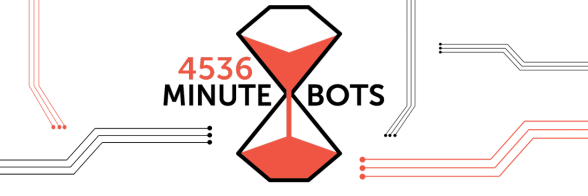Snapshot
MinuteBots is a FIRST Robotics Competition (FRC) team based at Central High School in Saint Paul, Minnesota. The team consists of high school students and volunteers that participate in annual robotics competitions where scouting and alliance formation are essential for success.
In their scouting process, MinuteBots needed a rapid and reliable way to transfer data between devices without relying on a wireless network. After facing limitations with open-source QR code scanning tools, MinuteBots adopted the Dynamsoft Barcode Reader SDK for its high performance and dependability, transforming their scouting application.
Challenge
In FRC competitions, teams observe other teams’ performances and collect various data points to form alliances. This data is then used to build a competitive alliance strategy. Previously, MinuteBots utilized open source QR code scanning SDKs to transfer this data where a QR code was generated on one device and read on another device. However, these scanners were slow and often unreliable, introducing inefficiencies in the data transfer process.
With students collecting information on iPads, the team needed a high-speed and reliable multi-device QR code reader for fast data transfer between devices. As a team of high school students, developing a QR scanning solution from scratch was impractical. MinuteBots required an SDK that could deliver consistent performance without complex customization.


Solution
MinuteBots integrated Dynamsoft Barcode Reader in their scouting application. The scouting process begins with students observing other teams, collecting performance metrics and using the Dynamsoft Barcode Reader SDK to scan QR codes generated on one device.
With Dynamsoft’s high-speed and dependable scanning capabilities, the team overcame the inefficiencies they previously faced. The overall implementation was quick, and the entire implementation process took only 3-4 weeks for students. The SDK also made it easy to integrate into MinuteBots’ setup, ensuring the students could focus on data collection without technical delays.
Impact
With Dynamsoft Barcode Reader, the MinuteBots scouting team achieved new levels of efficiency and accuracy. The application facilitated faster and more dependable data transfers, allowing students to focus more on analysis and strategy development.
The enhanced speed and reliability positively impacted MinuteBots' performance in competition, helping them form well-informed alliances based on accurate data.
The Dynamsoft Barcode Reader has been incredibly fast and reliable, especially compared to other solutions we tried. As a high school robotics team, the SDK made it easy for us to get up and running without additional coding.
– Mark Christenson, MinuteBots team
Future Prospects
Following successful implementation, there may be a potential use case for other FRC teams. This cross-team interest highlights the importance of the Dynamsoft Barcode Reader SDK in streamlining scouting workflows and improving the competitive strategy.
About Dynamsoft Barcode Reader SDK
Dynamsoft Barcode Reader is a premier SDK designed to deliver high accuracy and speed, even under challenging scanning conditions. By leveraging cutting-edge algorithms, developers can easily integrate robust barcode scanning into their solutions.
The SDK’s flexible integration options also make it an ideal solution for applications requiring swift and precise barcode reading without the need for extensive development work.




